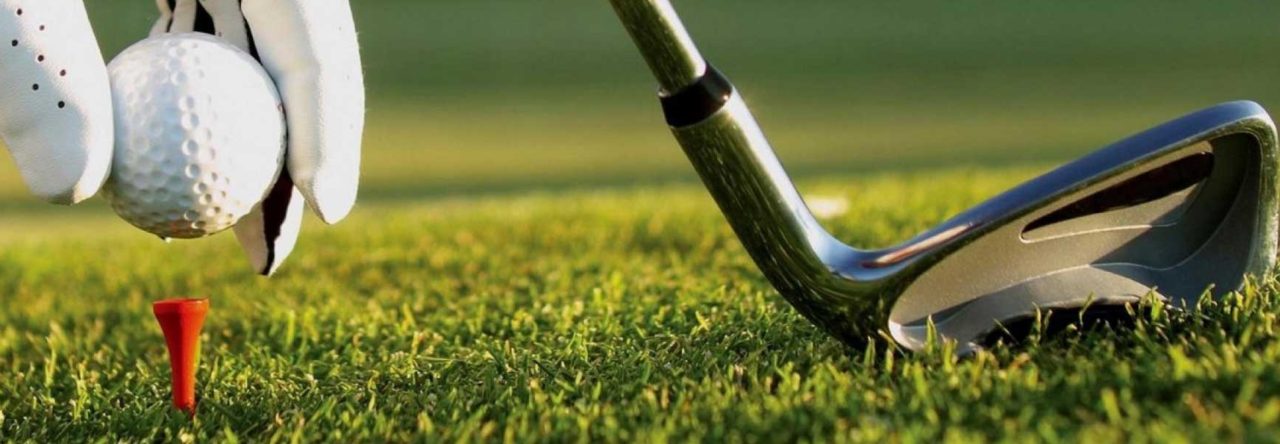The slice, a bane of many golfers existence when it comes to hitting the ball off the tee. You lose your distance, you lose your accuracy, and ultimately, you waste strokes every time you smack your tee shot off into the trees.
I got to personally see the damage a slice can do to someone’s game when I would step out onto the course with my father. Not to throw him under the bus, but his game off the tee used to be less than stellar, and it was mostly due to his “power fade” as he likes to call it; for the rest of us though, we’ll just call it his slice. Now he’s not the only one to fall victim to this pit fall off the tee but that doesn’t mean it isn’t a problem that shouldn’t be fixed. That’s something that we’re going to talk about a little today.
So why do we slice the ball and what can you do to fix this without having to hire a professional golf coach?
Well, let’s first look at the why…
Now while there are a number or reasons a golfer might hit a slice, most of these reasons boil down to three basic things:
- Your stance
- Your club face alignment
- And your swing plane
Let’s talk about your stance and alignment first…

The solid yellow line above shows a stereotypical stance for a “slicer”. This open stance accompanied with a square club face alignment is always going to result in a fade or slice.
When it comes to your stance, setting up square to your target or even slightly closed builds the foundation for good ball contact and straighter ball trajectory.
A great, quick test to see if you’re aligned properly is as follows; setup as you normally would and then lay a club across your two feet (or along the solid yellow line in the picture). If the club handle is pointed towards your target then your stance is square, if not adjust your feet accordingly. Easy as that!
Now that our stance is settled let’s talk about the alignment of our club face. Similarly to wanting a square stance to start off with, we also want our club face to be square with the target. Luckily for us though, most us do this naturally simply by having the leading edge of the club perpendicular to the flight we want the ball to travel. While this might seem like a no-brainier, many golfers that suffer from inaccurate tee shots try to compensate for their hooks or slices by changing how the club face interacts with the ball, something we don’t want to do!
Finally, the last part of our slicing checklist is fixing the path our club takes during our swing, or, simply called our swing plane. Unlike the first two bullet points however, this part of the slice isn’t quite as easy to fix, mainly because you don’t actually get a great chance to analyse your swing plane before your shot (and during your shot you likely have other things on your mind). Now although you might not be able to analyse your swing before you make it, we can break down the basic idea we want to capture like this; whatever plane you follow during your backswing, you need to follow on your foreswing.

This graphic highlights one of the most common mistakes in golf. On the right, the golfer attacks the ball on a different swing plane than his backswing. By coming “over-the-top” he is only encouraging his slice.
What goes up must go down, what goes right must go left, and what is taken away at a 59.6 degree angle must be returned to contact at that same angle if you want to make solid, consistent contact on your drives. Now, while there isn’t a perfect angle your swing should follow (for example I have a slightly flatter swing) the important thing is that you’re consistent with whatever swing plane you do choose to take. The most common mistake slicers make is what’s called “coming over the top” which essentially is a swing plane problem where your foreswing follows a steeper angle than your backswing. This results in an outside-to-inside swing path as the club strikes the ball, and ultimately, leads to a slice.
To correct this there really isn’t any magic trick you can try, you simply have to practice hitting your drives a little bit. One important thing you can do however, and this is what ultimately helped my father fix his slice, is have a friend videotape your swing a few times. Nothing convinces someone more that their swing plane isn’t consistent than watching a video of themselves swooping over-the-top swipe at their last couple shots on the range.
So there you have it, the three main reasons you can’t shake your slice: your stance, alignment, and swing plane. Now, of course, there could be other reasons also, but this brief guide somewhat assumes you’re doing all of the other small things right in your golf swing (something like rotating as your weight comes through instead of sliding your hips), which may or may not be the case with all of us…
So while I wouldn’t call this the complete guide to curing a slice, I would wager that 80%-90% of all the slices out there fall into one of these three categories and, if you do manage to fly through our short checklist without any problems, you should feel confident that fixing your slice is already closer to happening than you might have thought! So grab a buddy, hit the range, and let’s straighten out some slices!

